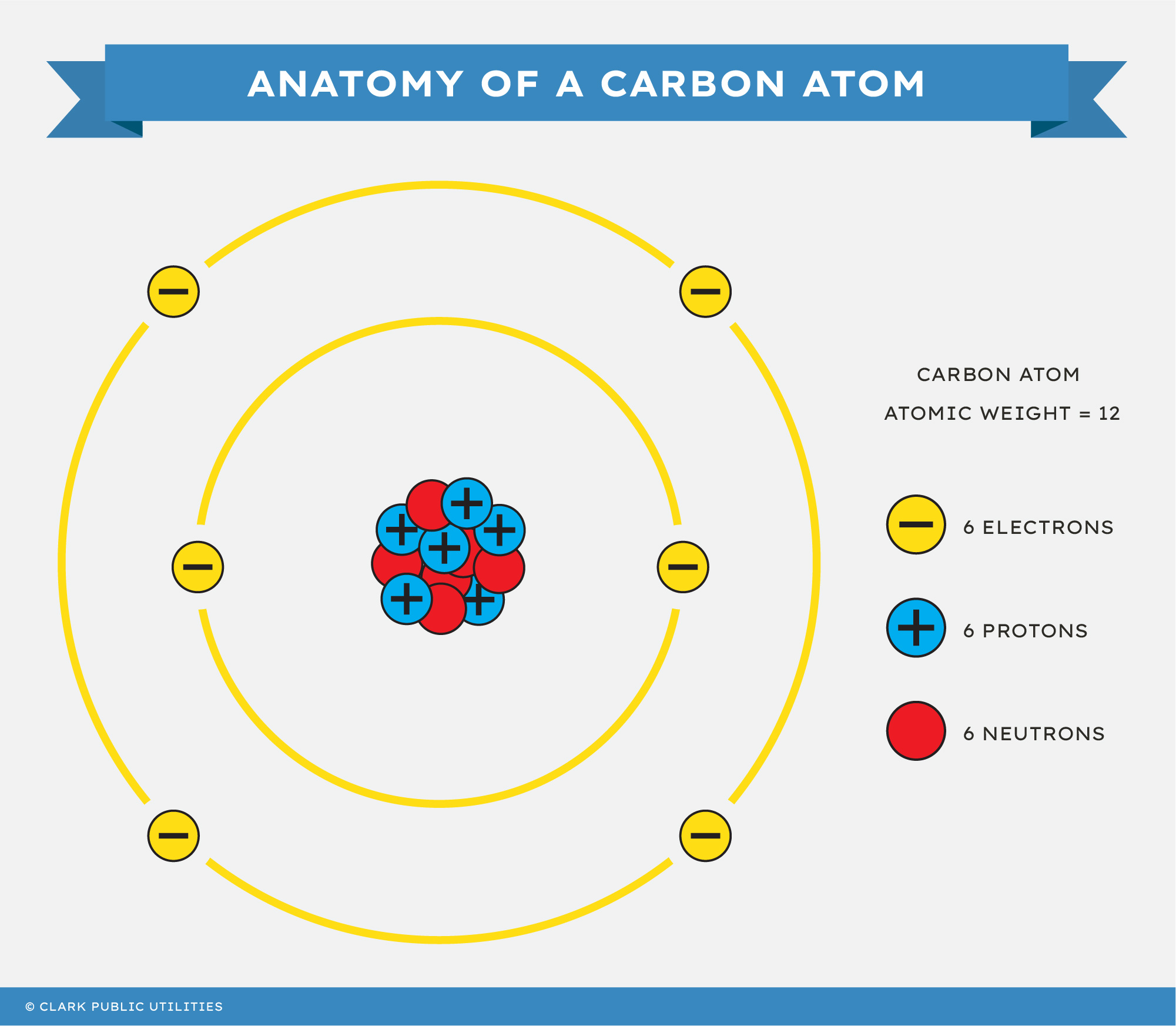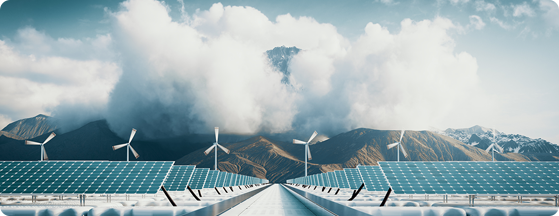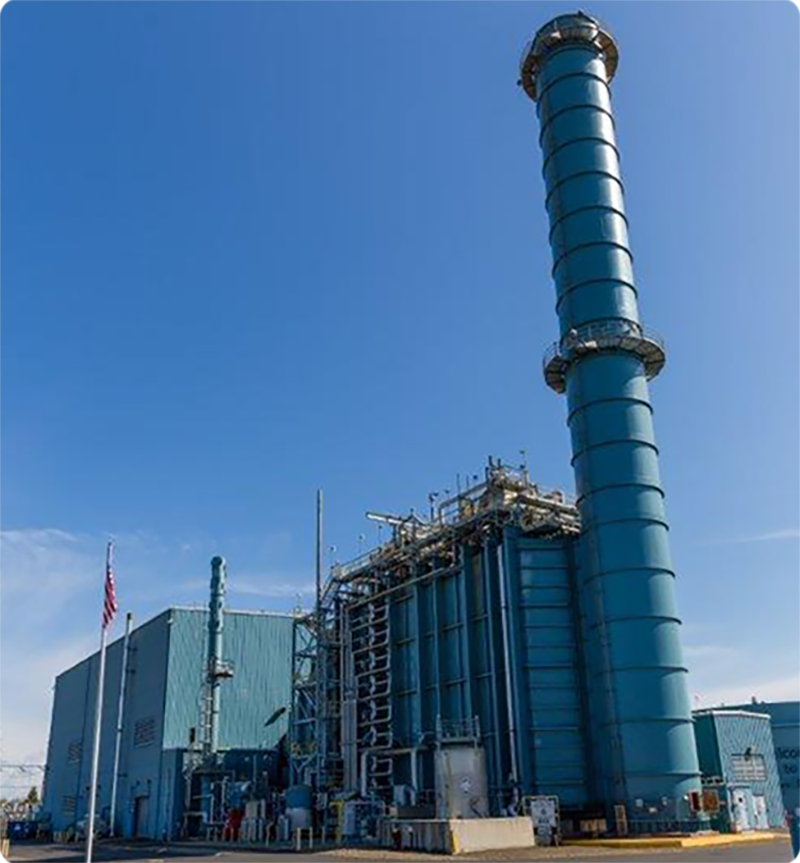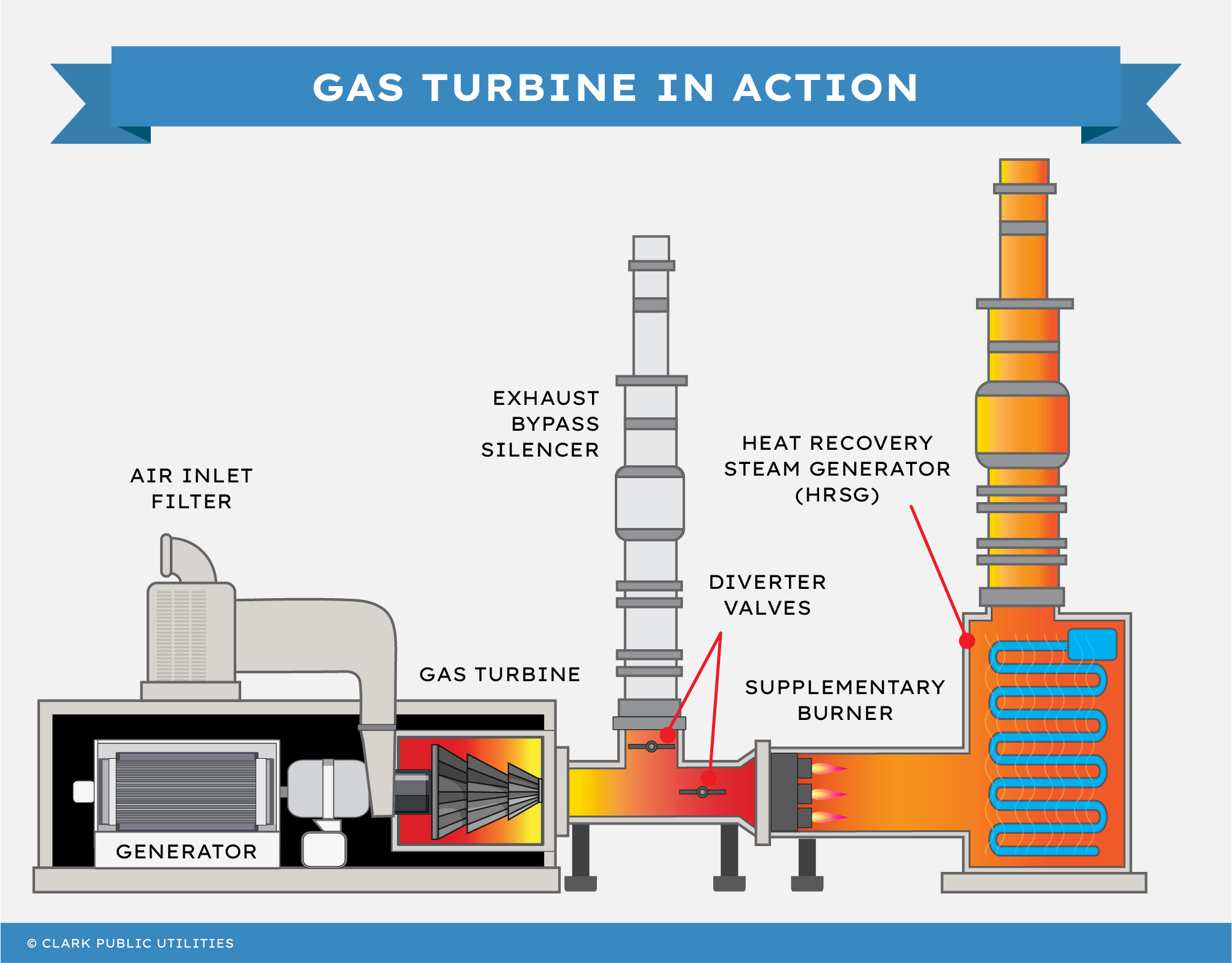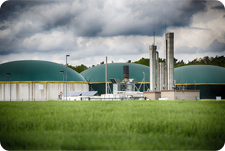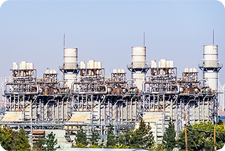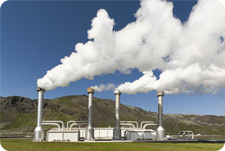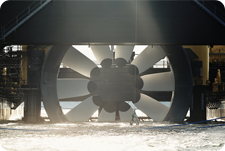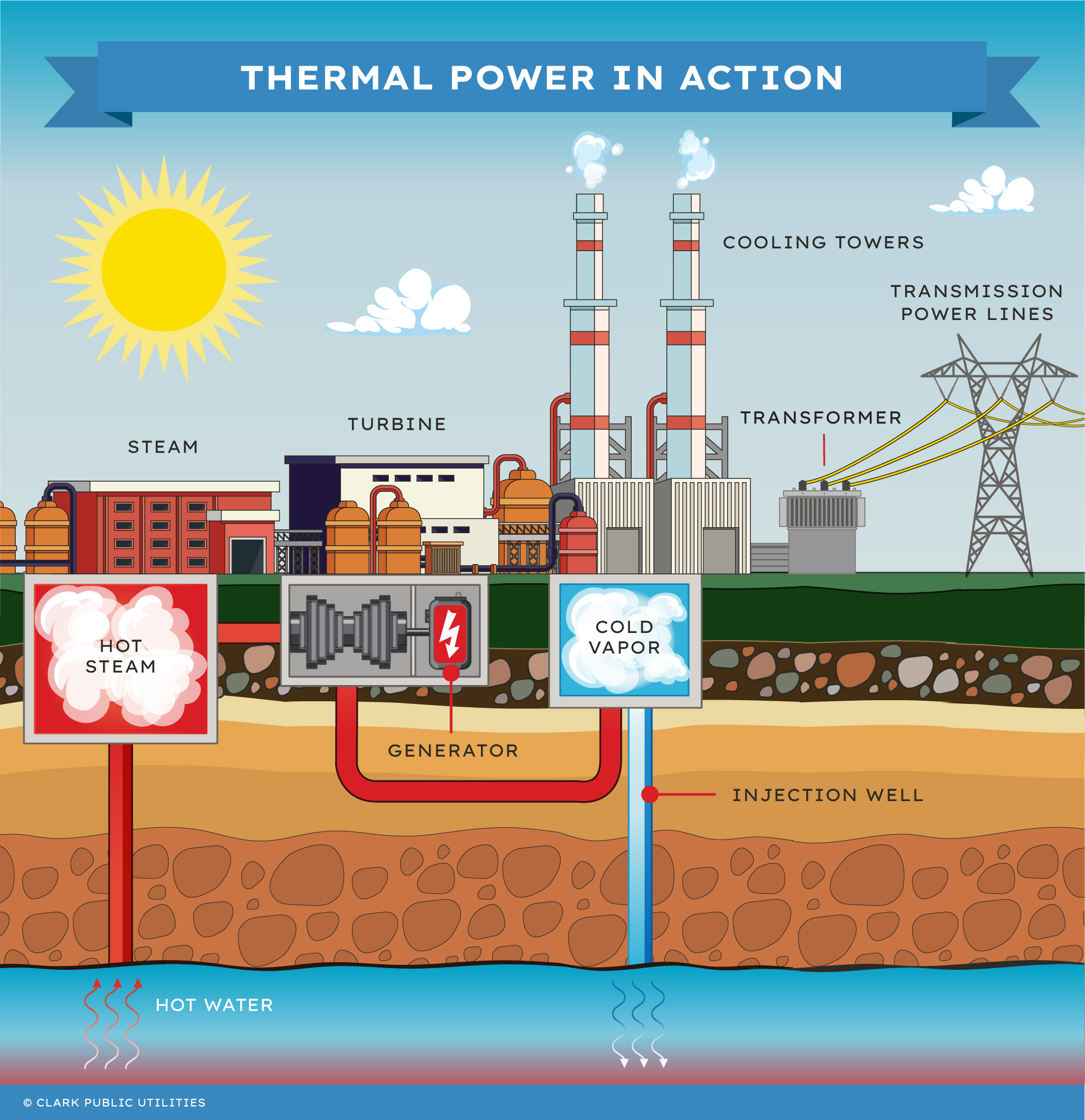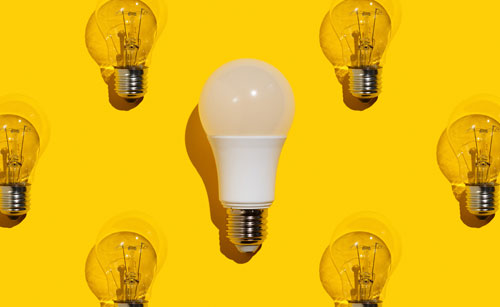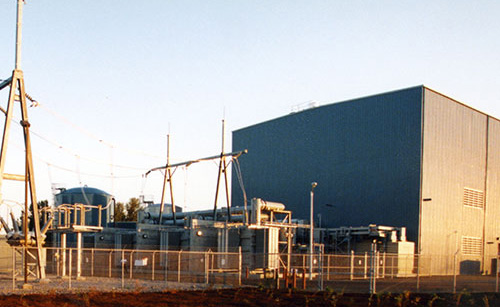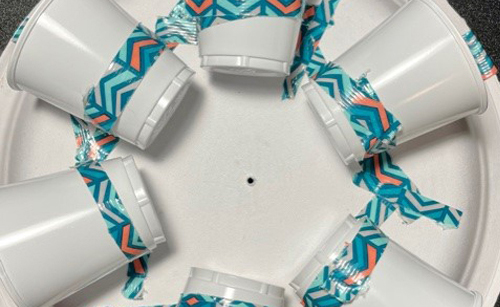Energy generation is a big topic to think about! First, we should consider how energy is made (and from what), and then we can dive into the importance of power plants for creating energy on a large scale to keep our cities working. Let’s dig in!
To learn about how energy is generated, we must start small. Everything in the universe–from humans to animals to toys (and even dirt!) – is made up of super tiny atoms.
Like a puzzle, atoms fit with other atoms to create all the matter in the universe. At the center of the atom is its nucleus, which is made of small particles called protons and neutrons. Moving around the nucleus is yet another particle, called an electron.
How energy is made
Protons, neutrons, and electrons, oh my!
Protons, neutrons and electrons each have very different characteristics (also known as properties), one of which is called an electrical charge:
- Protons have a positive charge.
- Electrons have a negative charge and like to hang out near the nucleus because they’re attracted to protons, their opposite.
- Neutrons have no charge at all – they are neutral.
Because the number of protons and electrons are the same in an atom, the whole atom has a neutral charge. But when an outside force like friction upsets the neutral balance by knocking an electron away or adding an electron, electricity is made.
Have questions? Please contact us!
Types of electricity
There are two types of electricity in the world: current electricity and static electricity.
Current electricity
Clark Public Utilities distributes current electricity. This electricity is created by an electric charge flowing across an electrical field. It will travel forever if it has a circuit to move through. Current electricity can be used to power your TV, refrigerator and lights in your home, school, stores, and more.
Static electricity
The second type of electricity is static. Static electricity is made with friction, or two surfaces rubbing against each other. Static electricity is the result of an imbalance between negative and positive charges in an object. While we can’t use static electricity to power our homes, it does create something really incredible: lightning!
Lightning is made when ice and water crash into each other in the clouds. This creates giant bolts of electric charge that can travel to other clouds or to the ground.

Stick two magnets together
Get a better understanding of a positive and negative charge by trying to stick two magnets together! The positive (+) and negative (-) sides of two magnets will stick together. But if you try to put the (+) and (+) together, it’ll feel like a force field is keeping the magnets apart.
Watch electrons move with a balloon
Blow up a balloon and see if it will stick to the wall. Now, rub the balloon on your head, then see if it sticks to the wall. It probably does, because the friction from the rubbing moved electrons (negative charges) from your hair to the balloon. When you put the balloon up to the wall, these electrons push the wall’s electrons away from the surface, leaving the wall more positively charged than the balloon. The balloon sticks because opposites attract. The electrons will eventually even out and the wall and balloon will be the same charge again. This is when the balloon falls off the wall.
Sources of energy
There are many types of energy that we can use to power your homes, schools, and businesses. These energy sources can be divided into two general categories of energy sources: nonrenewable and renewable.
Renewable energy
Renewable energy is energy that is generated from natural processes that can be replenished. Examples of renewable energy sources include sunlight, wind, geothermal, and water. Did you know that water is Clark County’s primary source of power? Learn more about the benefits of renewable energy.
Nonrenewable energy
Nonrenewable energy sources, also called fossil fuels, formed in the earth millions of years ago. Here’s what happened:
- The remains of plants and animals were covered with rock and mud.
- Then, deep in the ground, the pressure and heat of the Earth converted those remains to fuel.
- Today, humans extract this fuel in the form of oil, natural gas, and coal.
Nonrenewable energy sources are easy and inexpensive to extract and use. But they’re also limited in quantity and known to release carbon dioxide, a greenhouse gas, into the atmosphere when burned.
Greenhouse gases are known to trap heat in our atmosphere and cause global warming, so reducing the amount of fossil fuel we use is a great way to reduce slow down climate change.

Electrifying humor
One atom said to another atom:
I think I lost an electron!
The friend atom asked the concerned atom:
Are you sure?
The concerned atom responded:
I’m positive!
Power plants create electricity on a big scale
Power plants, also known as power stations, use different types of fuels (like coal, nuclear energy, gas, biomass, water, solar, and wind) to make large volumes of electricity. To do so, they need to move electrons on a bigger scale than just rubbing items together.
River Road Generating Plant
In Clark County, two-thirds of our electricity comes from Bonneville Power Administration, which provides clean, renewable hydropower. The River Road Generating Plant helps meet the other one third of energy needs using natural gas.
Built in 1997, River Road is in Vancouver, WA. Most generating plants last about 22 years. River Road is over 25 years old and is maintained and used carefully so it lasts as we transition to more renewable energy.
Fueled by natural gas
The River Road facility is a combined-cycle combustion turbine that is fueled by natural gas, which means it uses natural gas and steam together to make 50% more electricity than a single fuel generating plant would. Making electricity in the gas turbine causes excess heat that is used to make steam, which turns the steam turbine, making more electricity.
At the time it was built, this kind of generator was the most efficient available and produces about 40% fewer emissions than a coal-fired plant (per megawatt-hour). River Road is only “turned on” to make electricity when we need it and is part of the future plan to continue adding more renewable energy like wind and solar.
Hydroelectric power plants
At a hydroelectric power plant, electricity is made when water turns giant turbines very quickly. This spinning movement knocks electrons off atoms, making electricity. Generating hydroelectricity starts with the annual hydrologic cycle, which provides seasonal rain and runoff.
Here’s how it works:
Step 1: The runoff from rain and snow collects in lakes, streams, and rivers and flows to dams downstream.
Step 2: Hydropower projects catch the water on its downward path and convert mechanical energy into electricity. Water entering a powerhouse strikes a turbine, which turns a shaft to generate electricity. The water then returns to the river to be used again downstream.
Step 3: From the powerhouse, transmission lines carry current to where it can be used by electricity consumers.

Hydropower provides about 51 percent of the electricity generated in the Northwest. Thanks to clean renewable power, the Northwest’s energy carbon footprint is about half that of other parts of the country.

We’re responsible for keeping the whole power grid in Clark County charged with electricity so every home, factory, school, and streetlight has power! We get most of our electricity from hydroelectric power plants — specifically Bonneville Dam, one of the massive dams on the Columbia River. Clark Public Utilities also makes electricity at the River Road Generating Plant (which uses natural gas and steam), and sources power from solar arrays and wind farms. The amount of electricity in the lines must be kept constant to give appliances and equipment just enough power, but not too much. Too little or too much can damage devices connected to the circuit so important to keep a perfect balance. Learn more about Clark County’s renewable hydro power!
Coal-fired power plants
Coal-fired power plants burn coal and use the steam to create electricity. Here’s how it works:
- A ship, train, or truck delivers coal to a power plant, where it is ground into dust in a machine called a pulverizer.
- The coal dust is then burned in a boiler to produce hot air, which is used to create steam.
- Steam pressure makes a turbine spin, and the exhaust system is cooled, condensed back into water, and returned to the boiler. Most, but not all, water is recovered and used again.
- The turbine connects to a generator by a metal shaft, and this is where electricity is made as it spins!
- The hot air blown from the boiler exits through a chimney. While clean air laws require the exhaust be cleaned of coal particles before being released into the air, coal-fired plants still emit a significant amount of greenhouse gasses into the air. That’s why many developed nations are in the process of phasing out this type of energy generation.

Burning coal leaves ash that collects at the bottom of a power plant’s furnace, which can be used (with other ingredients) to make cement, wallboard, or even school running tracks.
Nuclear power plants
Nuclear power plants do not burn fuels to produce heat. Instead, they use nuclear fission, which is a reaction that involves the release of huge amounts of energy. Nuclear power plants are among the biggest power stations in the world, and the United States has 56 nuclear power plants in 28 states. The majority are in the eastern part of the country, but there are several in California and the Columbia Generating Station is located here in Washington State.
Other types of power plants
As a planet, our power needs are great. That’s why we have many different types of power plants. Here are a few more you may have heard of:
Biomass and waste-to-power plants
Biomass and waste power plants work just like many other electrical generating plants, except the fuel they use is wood, crops, waste from forests, yards, farms, and garbage. Learn more.
Gas-fired power plants
At a gas-fired power plant, electricity is generated by burning natural gas, which is a common way of generating electricity around the world. Although considered a significant source of greenhouse gas emissions, gas power plants can be used with renewable power sources.
Geothermal power plants
Geothermal power stations use heat from deep in the earth to generate electricity. To do so, wells are drilled deep in the earth and steam or hot water is piped to the surface, which powers a turbine. Learn more.
Solar power plants
Sunlight can be converted into electricity through solar thermal plants or photovoltaic (PV) cells. A popular renewable technology, there are currently millions of solar PV installations and large-scale solar power stations, and the amount is only expected to increase. Learn more.
Tidal power plants
Tidal energy or tidal power is a form of renewable energy obtained due to alternating sea levels. The kinetic energy from the natural rise and fall of tides is harnessed and converted into electricity. Tides are caused by the combined gravitational forces of the moon, sun, and earth. Renewable and predictable, tidal energy has historically been too expensive to implement widely. However, new technology is making this energy source more competitive.
Wind power plants
A group of wind turbines (also called a wind farm), can be used onshore or offshore to produce electricity. Requiring no fuel at all, wind farms have very little impact on the environment. Learn more.
Components of power plants
While the specifics of power plants differ slightly, all thermal (or heat-based) power plants usually have the same basic parts.
These include:
- Boiler
- Chimney
- Steam turbine
- Generator
- Cooling system
Learn more about these different components in the section below.
The boiler is the largest piece of a power station
Boilers are so tall they are often installed before the power stations walls are even built! Here’s how a boiler converts fuels into steam:
- To begin, boilers must burn fuel, making hot air, inside a furnace.
- A heat exchanger then uses the heat to turn water into steam. It does this by absorbing heat from the furnace through steel pipelines that contain water. The hotter the furnace is, the higher the steam pressure will be inside the pipes. Because of this, power plants have to be careful with how much pressure is in the pipes so they do not burst!
- Once the steam is super-heated, it travels to the turbine and then comes back to the furnace to be reheated.
A power station’s chimney has two purposes
The chimney of a power station serves two important functions. First, it provides a way for exhaust to leave the power station after it has been cleaned of pollutants. Second, it draws in air to help keep the boiler operating at a high temperature. Here’s how it works:
- The exhaust that exits from the top of the chimney is mostly carbon dioxide and water vapor, or steam.
- Because it is lighter than the cold air on the outside, it rises to the top of the chimney and reduces the pressure at the bottom.
- This makes a draft of cold air come in from the outside, which helps push up the exhaust. This is called a “stack effect.”
Steam turbines convert steam pressure into energy
As you can imagine, super-heated steam exits the boiler at a very high temperature and moves into the turbine under great pressure. The turbine’s job is to then convert the steam pressure into energy. Turbines are shaped like a funnel, with a small end near the highest steam pressure and the largest end near the generator unit. They are shaped this way to maintain a fast steam flow as pressure drops through the length of the turbine. For this reason, they have to be perfectly balanced.
The turbine consists of two parts: a revolving rotor, and a stationary stator. The rotor is a large steel shaft that is mounted with several rows of scooped blades (like spoons or a shovel). The steam turns the blades, which creates rotational energy. The rotor spins at 50 or 60 rounds a second. The rotor sits inside the stator, which contains steam pressure and directs it to flow over the blades.
Power generators
The generator is connected to the turbine by the revolving rotor. Through magnetism, it converts the rotational energy into electricity, which is then sent onto the grid and to your home.
The generator has moving internal parts that are surrounded by stationary exterior parts. The rotor is a powerful magnet that is mounted on the shaft. Around the rotor is the stator, which holds three pairs of symmetrically spaced wire coils. These coils are the beginning of the electrical conductors and the power grid.
When the rotor’s opposite magnetic poles swish past a coil pair, electrons in the coils are attracted to the positive pole and repelled from the negative pole. This pull/push motion generates a rising and falling voltage across the two coils that sit opposite each other in the stator.
The free electrons in the wire coils become agitated, inducing an electric current that moves down the electrical conductor. The current produces a magnetic field that surrounds the conductor wire.
The continuous spinning of the rotor repeatedly forces the current of electrons to move in one direction and then back, which is how we get the name alternating current.
Three-phase current
The three coil pairs are separated by 120 degrees (1/3 of a full circle) around the stator. Each coil produces a separate current flow, called a phase. Each phase travels on its own conductor line, which explains the reason conductors are visible in multiples of three on the electrical towers.
The rotor generates max voltage in coil 1, and as the rotor rotates clockwise, voltage starts to fall in coil 1. At the same time voltage starts to increase in coil 2, reaching max voltage at 120 degrees. After 240 degrees of rotation, voltage peaks in coil 3, and after 360 degrees, a full circle, the process starts again in coil 1. As the rotor keeps spinning, voltages in the three lines continue to rise and fall like waves.
Three-phase service is preferred over one-phase or two-phase service because it delivers high voltage more consistently. Since one of the rotors is always near its peak the power is more consistent. There is no ramp back up to the top of the wave, only consistent peak after peak after peak. Three phases also provide fewer electrical losses as it moves through the grid.
Shared frequencies are required for success
It takes a unified effort to get the entire power system to work together. Every generator has to work on the same frequency, so they are pushing and pulling electrons back and forth at the same speed and at the same time. This must happen in milliseconds. Generators in Europe, Asia, Oceania, and Africa spin about 3,000 times per minute, or 50 rounds per second. Generators in North and parts of South America operate at 60 rounds per second.
Each time a generator makes a full spin the electrons move forward and backward. Frequency refers to the number of cycles per second and this is measured in Hertz (Hz). Spinning 50 times per second equals 50 Hz. Using the wave image, the height of the wave is called amplitude, and this shows how forceful electrons are traveling in the wire at a specific point in time.
Types of power plant cooling systems
All heat-based power plants need cooling systems. At first this may seem like a waste of energy and time because the water used to make steam is cooled and then reheated, but it is very important. This is why many thermal, or heat-based plants, are located near water sources.
- One type of cooling system is called a once-through, which takes natural water from rivers, lakes, or the ocean to cool down exhaust steam in the condenser. Cold water flushes around a maze of pipelines to absorb heat before it is returned to the source. During the summer months, when water is warmer, this process becomes less effective. Many states and countries have regulations on the temperature of the water returning to the lake, river or ocean so wildlife is protected. Sometimes the water returning to the river is cleaner than when it was pumped out!
- A wet-recirculation system is a closed water system, meaning the water used to cool the exchanger is used repeatedly. This method is used when a natural water source is not near the power plant. In this system, the exhaust steam is cooled in the condenser and then the cooling water is sprayed through jets of air to lose more heat before it is recirculated to the condenser and used again. This process is done in a cooling tower, and the “smoke” coming out of the top is just vapor from the air-chilled cooling water.
- Another cooling system is called dry-cooling. We do not see many of these because air does not cool as effectively as water, making the power plant less efficient. The size of the power plant will also need to be smaller, reducing electrical output.
Power plant efficiency
Every power plant wants to make the most of the fuel it uses to make electricity. The measurement of the amount of fuel going into the plant versus the electrical output is called heat rate. If the plant sends in three units of fuel and is getting out one unit of electricity, that is a heat rate of 33%. The remaining 67% of energy is lost in the warm, unusable steam that leaves the turbine and as hot air from the furnace leaving the plant through the chimney. The power station also consumes energy, so this further lowers the efficiency rating.
Power stations that are above 45% are considered very good, and plants that are 33% or under are considered to have low efficiency. Turbines are an important piece in efficiency, as well as how the plant is operated.

